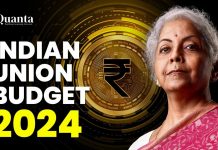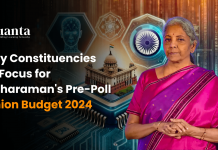Ex- Fintech, Edtech, E-commerce
Started with demonetization which triggered digitalization. It improved the acceptance of digital money. Only when payment goes digital, the sector of the economy goes digital.
The second trigger has been the coronavirus.
India is among the top nations with the world’s fifth-biggest online customer base and the majority of them are only using mobile internet.
Internet (disruption caused by jio improved internet and mobile penetration) and mobile have been the major drivers of this.
PROGRESS IN INDIA
Digital transitions in India increased by 55 percent in 2020. Between 2015-16 and 2019-20, digital payment volumes have grown at an annual growth rate of 55.1%. From 5.93 billion transitions to 34.35 billion transactions. In value terms, it went from 920 trillion to 1,623 trn, an annual compounded rate of 15.2%.
Unified Payments Interface saw its adoption growing multiple times. It has almost doubled in 2020 both in terms of volumes and value.
In a lot of ways, a lot of transactions that happen in cash aren’t taken into account for the calculation of GDP. It formalizes the economy. Every aspect of the transaction gets captured. It enhances the tax collection. (PRO)
TREND IN DIGITAL TRANSACTIONS
Digital commerce is currently the largest segment, accounting for about 2/3 of the total transaction values globally. Asia is the largest digital payment market with china alone comprising almost half of the worldwide transaction value.
The rest of it talks about central bank digital currency which I have covered earlier.
GOVERNMENT INITIATIVES
Nine pillars of Digital India
- Broadband Highways
- Universal Access to Mobile Connectivity
- Public Internet Access Programme
- e-Governance: Reforming Government through Technology
- e-Kranti – Electronic Delivery of Services
- Information for All
- Electronics Manufacturing
- IT for Jobs
- Early Harvest Programmes
- Related Resources
https://vikaspedia.in/e-governance/digital-india/nine-pillars-of-digital-india
What was in the Union budget for digitization:
As the world moves towards complete digitalization in the post-Covid era, Finance Minister Nirmala Sitharaman introduced a ‘Made in India’ tablet replacing the traditional briefcase before presenting Budget 2021. That’s certainly a big step towards a paperless Budget that aims to reinforce PM Narendra Modi’s ambitious ‘Digital India’ mission. The FM didn’t announce any sops to boost the IT-BPM industry this year, but given the role of the technology in the growth of Digital India, the government has announced some measures and favorable policies in creating the digital infrastructure and the ecosystem to support the country’s growth and innovation. Here are the key highlights for boosting tech and digital initiatives at the Union Budget 2021-22:
GIFT City, Gandhinagar
The FM said that the government will facilitate the setting up of a world-class fintech hub in Gujarat International Finance Tec (GIFT) city. The GIFT City is a planned business district that spans over 886 acres of land and includes office spaces, residential apartments, schools, hospitals, hotels, clubs, retail, and various recreational facilities. That’s a great move considering India is one of the fastest-growing fintech markets in the world. The fintech market in India is expected to reach Rs 6,207.41 billion by 2025, expanding at a compound annual growth rate (CAGR) of 22.7 percent during the 2020-2025 period, according to ResearchAndMarkets.
NCLT framework to be strengthened and e-courts implemented
In light of the Supreme Court’s Order in 2020 to explore video conferencing for hearings to extensively use video-conferencing for judicial proceedings, the FM endorsed the setting up
of more e-courts for litigants to file and hear matters. She said that the National Company Law Tribunal (NCLT) will be strengthened and e-courts implemented across the country. E-Court’s mission project is the largest undertaking to make courts digitized in order to increase the efficiency and efficacy of the judiciary. maintain social distancing amid coronavirus pandemic.
FM announces Rs 1.15 lakh crore for Railway digitization
The FM said the Indian Railways has prepared a National Rail Plan for India 2030. The plan is to create a future-ready railways system by 2030. The government aims to bring down the logistic cost for industry to enable Make in India by effective use of technology. The Indian Railway Catering and Tourism Corporation (IRCTC) will restart e-catering services from February 1, 2021). Initially, services will start at 62 stations in the first phase. The stations selected for the first phase of resumption include New Delhi, Lucknow, Bhopal, Surat, Pune, Ahmedabad, Howrah, Patna, Vijayawada, Ernakulam, Ujjain and Panvel.
Relief for remote workers/gig workers
Revised fiscal deficit pegged at 9.5% for FY21, FY22 expenditure outlay at Rs 34.8 lakh crore To further extend efforts towards unorganized labor force, a portal to be launched to collect relevant information on gig workers, building/construction workers among others. The increase in remote workforce will boost in business for hardware companies, as the country will likely see a surge in sales of laptops, tablets, smartphones and printers.
India to have first-ever digital census
Union Budget allocates Rs 3,768 crore for this “monumental task” the 2021 national census of India will be held digitally, said Ms. Sitharaman during her Union Budget 2021 speech. She confirmed that the upcoming census of India would become the very first one in the history of India to be held digitally, marking India’s transit towards digitizing government and public services, and continue transiting towards paperless operation systems. The proposal will boost software companies that build and run IT-enabled infrastructure.
Digital voter ID card
From 1 February, all voters will be able to download their digital voter ID card if their mobile number of linked with the Election Commission. The e-voter card will be available in PDF format and cannot be edited. The digital voter ID card can be self-printed and laminated by the voter when required.
Govt to reduce compliance of one-person companies
Budget provides Rs 15,700 crore to MSME sector, more than double of last year. Plus it aims to reduce compliance of one-person companies, which is a big boost for startups,
especially in the tech and digital space. Punit Modhgil, Chief Research Officer, Octane Research believes MSME redefinition and incorporation of start-ups made it easier.”Enabling one-person companies is a huge step forward for encouraging start-ups in India as it provides more flexibility for entrepreneurs. Changes to Paid-up capital and turnover restriction is a welcome idea but there is a need to reduce regulatory and compliance overheads for very young companies. We anticipate this should act as a multiplier effect to start up an ecosystem in India,” he said.
To structure your CAT online preparation in an efficient way consider joining iQuanta which is a top online cat coaching institute and being a part of the iQuanta CAT 22 Course.
You can also check out and be a part of their Facebook group for peer learning, doubt solving and free material.
For 24*7 doubts-solving, FREE guidance and counselling and peer to peer learning, join the CAT preparation Fb group below:







